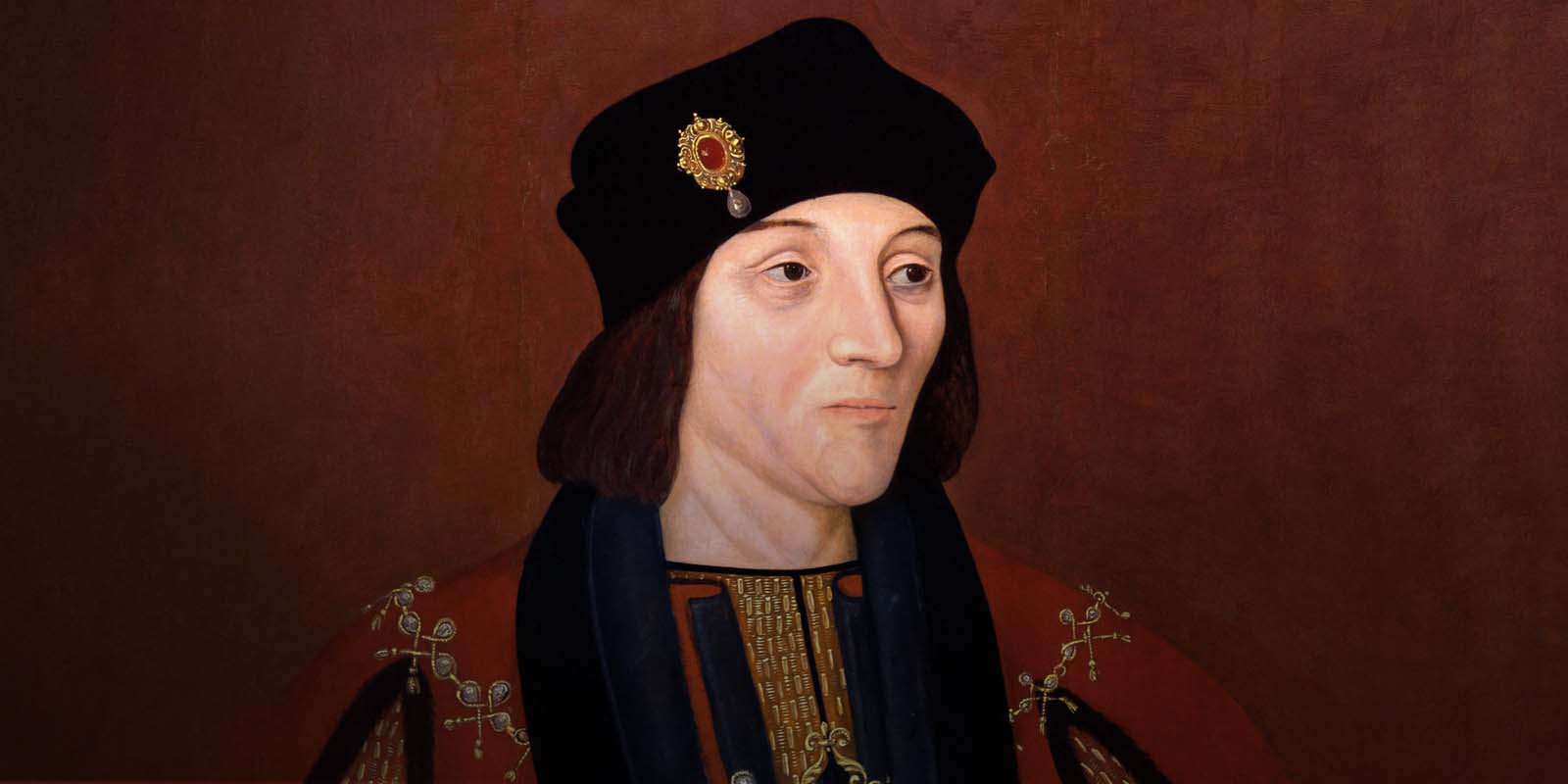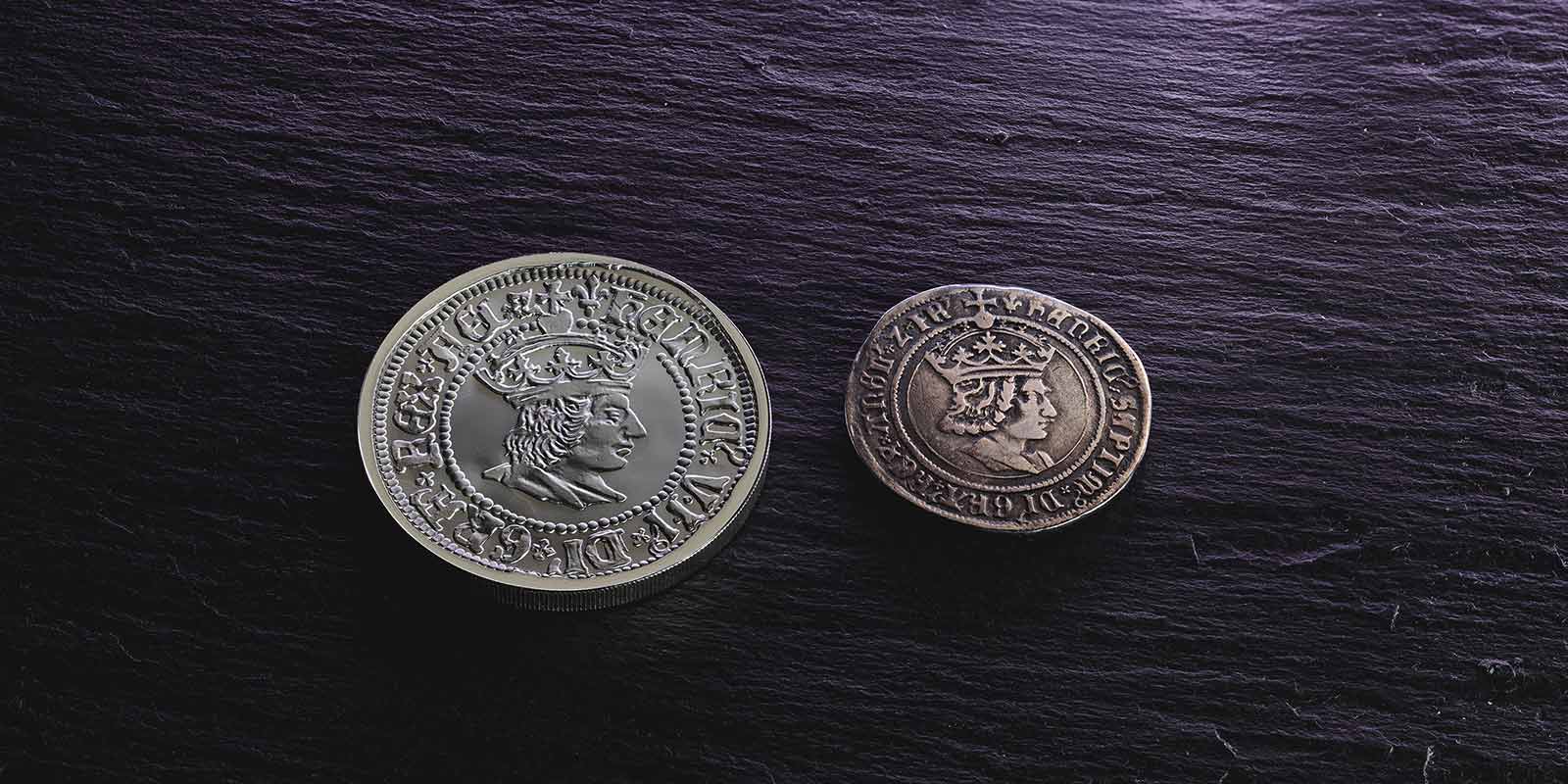The British Monarchs Collection is a unique commemorative coin series that blends classic coin designs of yesteryear with the modern techniques of today. Utilising state-of-the-art technology, these coins feature a variety of majestic designs – many of which replicate coins that date back centuries – from the reigns of some of Britain’s most iconic monarchs.
From the outset, we wanted the coins of The British Monarchs Collection to be finished to our premium standard without compromising the historical accuracy of the designs that grace each coin. Naturally, such an undertaking posed a challenge for our Product Design team, who had to combine faithful and historical recreations with superior, contemporary standards. We sat down with our Chief Engraver Gordon Summers to find out how the team produced such historically accurate modern coins.
When the British Monarchs concept was first suggested, how did you approach the overall process of remaking these classic coin designs?
“From the early concept stages, we were looking at how we could reproduce these classic coins in a way that would faithfully match the style of the original. We didn’t want to make them appear too modern and approached the project from a viewpoint where we would try to produce a coin to the best quality possible at that point in history.
“In the early days, coins would have been hammered and blanks weren’t always particularly uniform in appearance, so it was important to keep that in mind when we remade them. At that time, there wouldn’t necessarily be one engraver either. We don’t know the personality of the original engravers/designers as it could have been one of many sat on the bench at the time.
“If you think of master tools, which would have come later, that would be designed by one person and all subsequent coins would come from that original master tool. Historically, that wasn’t the case: somebody would have done the first one and then various engravers would have tried to copy it. If the die broke, they’d have to try and rework it or make a new one – so there’s a lot of variation in the coins and we had to try and capture that as well.”
What steps did you take to achieve an accurate reproduction of these coins?
“The first stage was to try and find a sample that we were happy and confident we could work with. We were looking for the best available piece; best in terms of design and best in terms of how it had survived through the ages. We were looking for a really clear, well-engraved image. Once that sample had been identified, we would scan it using a very precise digital scanner, which gave us a really accurate digital model of the design.
“The main issue at this stage was that, although these pieces were the best examples we had, they had still been worn over time. It might show damage, it might be clipped, it may even have been buried for 300 years, so it’s not really an accurate representation of how the coin would have appeared when it was first produced. So, we’d take our scanned model and work on it digitally.”
What did the digital remodelling entail?
“What we’ve tried to do through each house in this collection is look at what they’d have been able to achieve within the confines of the technology of the era. We’d start by zooming in very close to try and get the essence of what the engraver was trying to achieve at the time. If there was wear, we could remove the wear; if it didn’t fully strike, we could make it appear as though it had; if the blank was irregularly shaped, we could solve that issue.”
Were there any aesthetic quirks that were particularly commonplace on the older coins as a result of primitive technology?
“For the earlier coins, we’ve got things that are not fully made, the surface isn’t particularly smooth because they wouldn’t have had the technology to make a perfectly smooth die and then engrave it. There’s also a thing called fishtailing on the letters, where if you hit something very hard – even if the lettering is perfect – you get a slight curve at the bottom of the letter, which is quite common on historical coinage.
“Similarly, they wouldn’t have had the magnification that we have now, so where we would be able to plot a perfectly symmetrical array of dots on the inside edge of a coin, they would have been working with hand punches and doing it by hand, so there’s a lot of irregularity.”
How did you decide what irregularities to omit and what to include?
“They would have tried their best but it wouldn’t have been perfect, so we’ve tried to be sympathetic to that and tried to reproduce the coins in this manner. If there’s a design issue stemming from something that the coinmakers would have had to deal with consistently at the time, we’ve left it in. If there’s a feature that may have occurred historically simply out of error, then we’d remove it. We wanted to try and provide something that presents the best that they could have achieved at the time that the coins were actually struck.”
Older coins were often characterised by a shape that wasn’t perfectly circular. How did you address this issue when recreating the older coins?
“For the earlier coins, such as the Henry VII piece, where the shape wasn’t perfectly round, we looked at various different ways we could go. We could have created a coin that was an irregular shape but that would have meant that Her Majesty The Queen’s current portrait [which acts as the obverse of the British Monarchs coins] would have also been irregularly shaped.
“To avoid any issues with the present-day obverse design, we opted to maintain the modern edge shape and keep it perfectly round. However, what we’ve done with the older coins that weren’t perfectly round is include an inside edge – the shape within the edge – which has been altered to reflect what was on the original coin that we scanned.
“Essentially, it’s as though we’ve taken the original die, which wouldn’t have been particularly round, and struck it into a present-day blank in a current collar. So when it all forms into the collar, it’s all perfect but it’s as though you’ve taken an impression of that original die.”
What are the main differences you notice on coins as you move from one dynasty to the next?
“There is a marked difference between the quality of the Tudor coins and Stuart coins, primarily because they had better lenses and better lighting, not forgetting a better technology. The Henry VII piece in this collection has got a notably uneven table surface, which we have regularised for subsequent coins, as the blanks were getting better at that time and they would have been more in control of the design.”
How did those emerging technologies impact the way coins were made?
“As you move out of the Tudor period, we start getting things struck in collars, so they were perfectly round. From there, engravers started using mechanical presses rather than hand hammering, so the quality of striking was a lot better. Eventually, they were able to produce coins from master tools, which changed the process dramatically.
“The chief engraver at the time would have engraved the portrait and then that portrait would have been embossed on other dies. With that being said, it wasn’t uncommon for lesser engravers to subsequently provide the inscriptions, so it comes to the point where you have consistency with the portrait but maybe the lettering is bit skewed or beaded. This was commonplace up until the twentieth century, where copy machines would have produced designs as a large model to then be reduced down.
“The invention of reducing machines and copying machines improved the quality noticeably. The artist then changed from being an engraver to someone who produces a large model. All the lettering is on that model too so it becomes very consistent and precise, all struck on mechanical presses, which are able to reproduce things smoothly with a higher degree of accuracy. That evolution has continued right up to today where, in terms of accuracy, we can now work to four decimal places using digital technology, such as lasers and CNC engraving machines.”
How did this project differ to previous projects that revolved around remaking classic coin designs from history?
“When we did The Great Engravers Collection, we focused on the original artistry as much as possible. When it comes to working with older samples – such as the Henry VII and James I coins – we can’t reproduce the original artistry exactly due to age damage, so we’ve had to try and identify which features came from the original era and what are the result of damage. We also have to take into account anything that may have happened at striking, for example double letters, where they would have hit it twice and left an impression. Features like that we’ve left in because it’s reflective of the technology of the time.”
COINAGE UNDER THE TUDOR ROSE
Find out more

